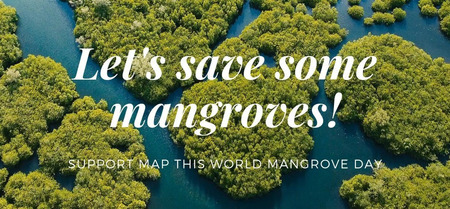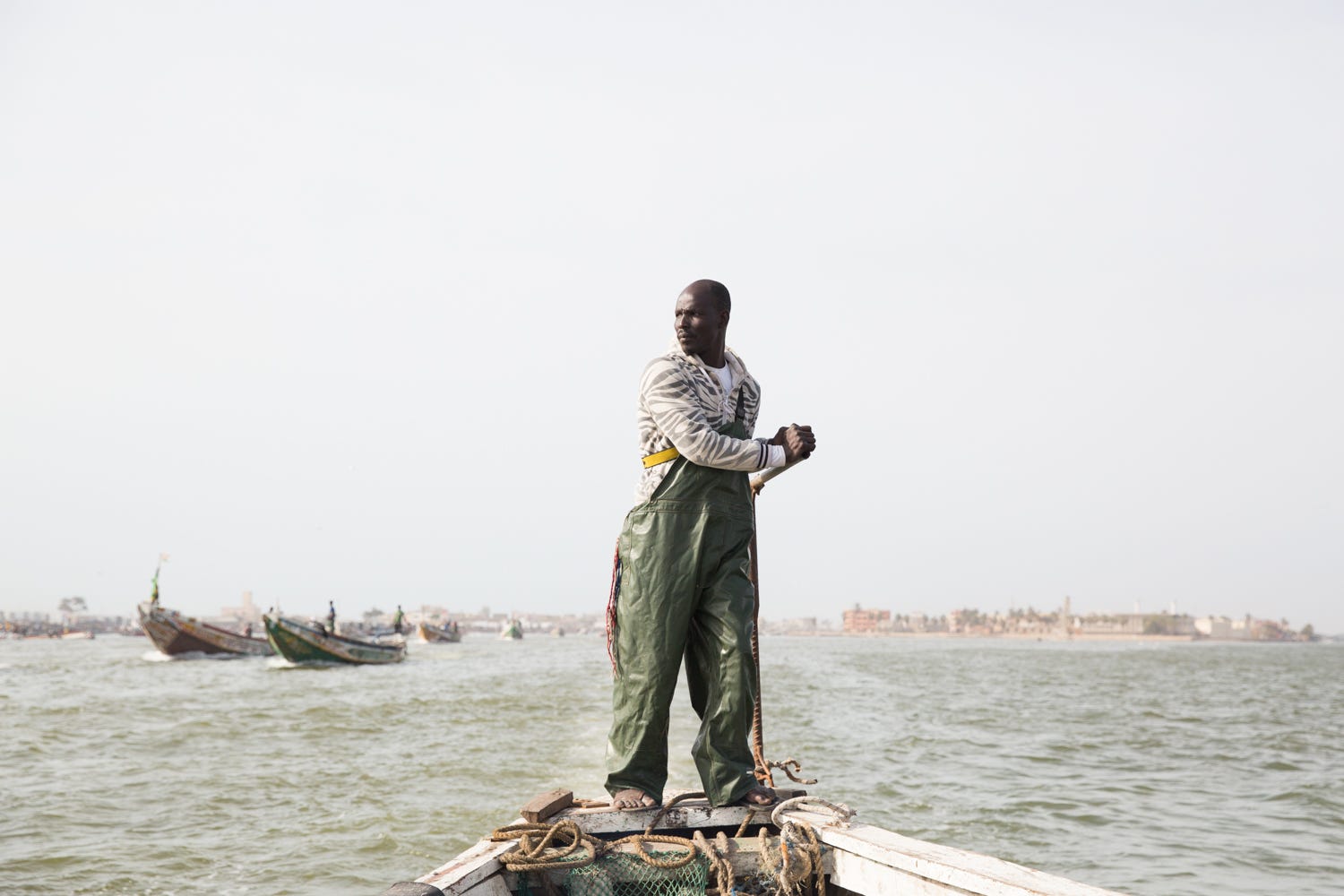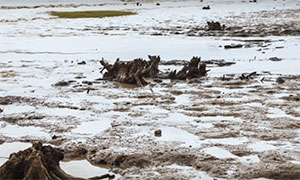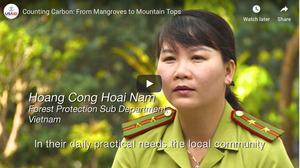|
The MAP News
473rd Edition July 20, 2019 |
|
FEATURE Mangrove Action Day because #MangrovesMatter  GLOBAL - Our world faces a multitude of ecological crises – ranging from climate change, to an enormous loss of biodiversity, to a depletion of the ocean’s once vast resources. However, mangroves can help with all of these! This is precisely why we’ve launched our #MangrovesMatter campaign – to help raise awareness of how mangroves can help solve some of our world’s most pressing environmental issues, and the need to protect and restore them for all those who depend on these critical ecosystems. We at MAP are working to protect our world’s invaluable mangrove forests, and to empower communities who depend on them – but we need your help to do so. We couldn’t do the work that we do without our own network of supporters behind us, and we need your help now more than ever. By donating to MAP – either in a one-time sum, or by giving a small amount monthly – you can help us in our work to empower mangrove communities, and to train other NGOs and governments around the world in the best preservation and restoration practices, so that we can all work together to conserve the world's mangroves. Fixing the planet will be a team effort – and we want to thank you for being a part of it! READ MORE GLOBAL MAP's “The Wondrous Mangrove Forest” chosen for Film Festival  GLOBAL - We're thrilled that our animation, The Wondrous Mangrove Forest, has been officially selected to be shown at this years Good Natured: A Conservation Optimism Short Film Festival, which is part of the 2019 Conservation Optimism Summit. The 2019 Conservation Optimism Summit, organised by the University of Oxford in partnership with Synchronicity Earth, will bring together passionate and creative people from around the globe to share ideas and offer solutions for more empowering conservation while continuing to disrupt the doom and gloom narrative. The summit, will take place from 2-4 September at St Catherine’s College, Oxford and will gather people from the worlds of conservation, government, industry, journalism, NGOs, academia, and the creative arts to highlight ways in which we can cross-pollinate new ideas and share our strength and resources! READ MORE Mangrove Restoration for Sustainable Development Goal 14: Discover the Potential GLOBAL - The wide-ranging benefits of mangrove restoration, conservation & sustainable management are a key pathway to meeting the targets of SDG14. Many of the voluntary commitments made towards SDG14 through the UN Community of Ocean Action for Mangroves focus on global, national, and local mangrove restoration. In this webinar, Dr. Tom Worthington of the University of Cambridge presented the Mangrove Restoration Potential Map and demonstrate how to utilize the map to inform effective restoration. In addition, coordinators of the Global Mangrove Alliance, Jen Howard of Conservation International and Emily Goodwin of IUCN, showcased the work of the Alliance to accelerate progress towards a global restoration target of extending mangrove cover 20% by 2030. The presentations were followed by discussions on how the UN Community of Ocean Action for Mangroves can work together to advance mangrove restoration globally for the implementation of SDG14 and other SDGs. Recordings of the webinars can be found here AFRICA In Senegal, clinate change is a fact  SENEGAL - "People living in poverty or living very close to land and sea will feel it first, and often those are people who are not listened to, or whose knowledge is not respected.” In poorer parts of the world, climate change and its disastrous effects are already a reality. In low-lying countries like Senegal, rise in sea levels and unpredictable rainfalls wreak havoc on the lives and livelihoods of people who can least afford to cope. However, in the countries responsible for most of the greenhouse gases, climate change is treated as a political issue rather than the established scientific fact that it is. Greta Rybus is an American photojournalist who recently undertook a multi-nation project to document climate change crisis in Senegal, Panama, Norway and the United States. Rybus recently spoke with Journalist Marion Durand about her photo essay on how climate change is impacting communities on the coast of Senegal.READ MORE AMERICAS Northfield Girl Scouts plant mangroves during Costa Rica conservation trip  COSTA RICA - Northfield Girl Scout Troop 25258 (ninth- and 10th-graders) recently returned from a trip to Costa Rica. They participated in a conservation project learning about mangroves and other plants that protect the shoreline. The girls collected and started mangrove propagules, planting them along the river and Pacific coasts. VIEW SOURCE Island Trees Have Nowhere to Run From Climate Change  USA - Kyle Rosenblad was hiking a steep mountain on the island of Maui in the summer of 2015 when he noticed a ruggedly beautiful tree species scattered around the landscape. Curious, and wondering what they were, he took some photographs and showed them to a friend. They were Bermuda cedars, a species native to the island of Bermuda, first planted on Maui in the early 1900s. “Sometimes, island species are transported by humans outside their native islands — either to a mainland continent or to another island — and manage to survive in the wild there, as the Bermuda cedar has done on Maui,” said Rosenblad, a research associate with the Sax Lab at Brown University’s department of ecology and evolutionary biology. He had never been to Bermuda, but suspected its climate was different from Maui’s. “Then it hit me: if my suspicion was correct, then this species, by succeeding in Maui’s climate, was effectively showing us its biological buffer that might help it survive future climate change,” Rosenblad said. “However, we still didn’t know whether this buffer would be wide enough to accommodate the changes in climate expected to occur on Bermuda.” READ MORE ASIA Preserve mangroves to avoid future flooding: Research body  INDIA - With the incessant rain leading to flooding and severe waterlogging in the suburbs, the Mangrove Society of India (MSI), a research body working on mangrove conservation across the country’s coastline since 1990, issued a statement alerting the Maharashtra government to ensure mangrove forests, coastal and inland wetlands, and green zones are protected to avoid future flooding. MSI members said with growing incidents of extreme weather events and fast accumulation of rainwater, fresh plantations and conserving existing salt-tolerant trees can help reduce the extent of flooding. “If we try to play with nature through human interventions, the response from nature will be disastrous as witnessed on July 26, 2005 (floods that killed over 1,000 people), and between Monday night and Tuesday morning in Mumbai with over 200mm rain,” said Arvind Untawale, executive secretary, MSI and former director, National Institute of Oceanography (NIO), Goa. READ MORE Mangrove forest planned in the city  INDONESIA - The Davao City Disaster Risk Reduction and Management Office (CDRRMO) will be embarking on planting more mangrove trees on coastal areas of the city to act as natural barriers against tsunami. CDRRMO training officer Lyndon Leovic Ancajas said they will be following one of Indonesia’s risk reduction practices, which is integrating mangroves into coastal defense strategy. “During Indonesia’s 2006 tsunami, there were only lesser damage because of the mangrove,” Ancajas told reporters during the i-Speak media forum on Thursday, Ancajas said they are studying where they can mangrove since the city’s coastal areas already have informal settlers. READ MORE This vanishing forest protects the coasts—and lives—of two countries  BANGLADESH - In Bangladesh and the neighboring Indian state of West Bengal, there are thousands of villages like East Dhangmari—places that are losing their natural defenses against climate change just as it is intensifying. The land is paper-flat and crisscrossed by rivers bulging with meltwater from the Himalaya. Cyclones frequently roar in off the Bay of Bengal, sometimes killing thousands. Flooding is pervasive. One thing the region’s coastal communities felt they could always bank on, though, is the Sundarbans, the world’s largest contiguous mangrove forest. Spanning nearly 4,000 square miles on both sides of the Indian-Bangladeshi border, this dense swamp of flood-tolerant trees stands as a green wall, absorbing storm surges and blunting even the worst cyclones. But after years of abuse from man and nature, the mangroves seem to be nearing their limits.READ MORE UNESCO Ask To Halt All Industrial Constructions Near Sundarbans Before SEA  BANGLADESH - Despite heavy lobbying by Bangladesh government and Chinese coal diplomats, UNESCO held the ground by asking to halt all industrial constructions near the Sundarbans. On Thursday 4 July at the 43rd meeting of the World Heritage Committee in Baku the committee agreed a decision that “notes with great concerns the likely environmental impacts of large scale industrial projects” and asked Bangladesh government to “take all necessary mitigation measures”. The committee asked the government to conduct a regional Strategic Environmental Assessment (SEA) by the end of 2019. It “expresses concern that 154 industrial projects upstream of the property are currently active, and reiterates the Committee’s request in Paragraph 4 of Decision 41 COM B.25”. The government has been asked to “ensure that any large-scale industrial and/or infrastructure developments will not be allowed to proceed before the SEA has been completed.” READ MORE Bullet train project: PMO responds to green activists' plea on mangroves  INDIA - Hours after the National High Speed Rail Corp Ltd (NHSRCL), implementing the 508-km Mumbai-Ahmedabad bullet train project, it has reworked the Thane station's design in Maharashtra to reduce the number of mangroves affected. The Prime Minister's Office (PMO) has sent a request by green activists in the matter to the Environment Department. The PMO was requested by green activists and the fishing community to stop destruction of a whopping 54,000 mangroves in Mumbai for the Mumbai-Ahmedabad high speed train project. NHSRCL Managing Director Achal Khare said that under the new design, an estimated 32,044 mangroves may be affected instead of 53,000. "The location of the station is the same but after the redesigning now only three hectares will get affected as compared to the earlier 12 hectares of mangrove region. So this way, we have reduced the destruction of 21,000 mangroves and now only 32,044 mangroves will get affected by the entire project," he said. READ MORE LAST WORD Dear all, Thank you for your amazing support. As many of you may be aware, the outcome of the discussion on the Sundarbans was held in Baku last Thursday but the outcome is disappointing. The discussion ended with a decision which pushes back the consideration of putting Sundarbans on the list of "Heritage in Danger" to 2020. Despite all urgent calls, the World Heritage Committee failed to act effectively and compromised (not surprisingly) one of world's largest mangrove to corporate aggression. UNESCO should be held to account for this poor outcome but in Bangladesh, we (the community reps and NCBD) advise everyone to take the positive out of the decision. Bangladesh's government has been asked to "ensure that any large-scale industrial and/or infrastructure developments will not be allowed to proceed" before a regional Strategic Environmental Assessment has been completed by end of 2019. Although the government of Bangladesh, backed by Chinese coal lobbyists, has maintained the Rampal project was put through a thorough environmental assessment process, the International Union for Conservation of Nature has disputed this claim. When we keep the pressure on UNESCO to act more effectively, we should not let Bangladesh government to take any chance - they should not make any move with coal to the vicinity just yet. Any attempt to build coal plants in the area before the SEA is completed will be resisted by the people. We hope that you will be staying up with us as ever. Thank you for all you have been doing to save the Sundarbans! Rumana. |
MANGROVE ACTION DAY
|
Mangrove Action ProjectClick here to view past newsletters |
|
Search News Archive
Saturday, July 20, 2019
MAP News Issue 473 - July 20, 2019
Subscribe to:
Post Comments (Atom)
-
The community of adults and youth in Cayman Islands has come together recently to release a series of educational videos. Each is geared to...
-
By Alfredo Quarto, Program & Policy Director Co-founder, MAP There is a rather urgent situation concerning the bio-invasion of the Son...
-
By: Isabel Robinson, MAP Volunteer Intern Some months ago I decided to come to Thailand and do an internship in mangrove conservation, ...
MAP News Issue #596 = April 20, 2024
ENTRIES NOW OPEN! Mangrove Photography Awards 2024 10 Years Celebrating Mangroves GLOBAL - MAP has launched our 10th Mangrove Photograp...






















No comments:
Post a Comment
Note: Only a member of this blog may post a comment.